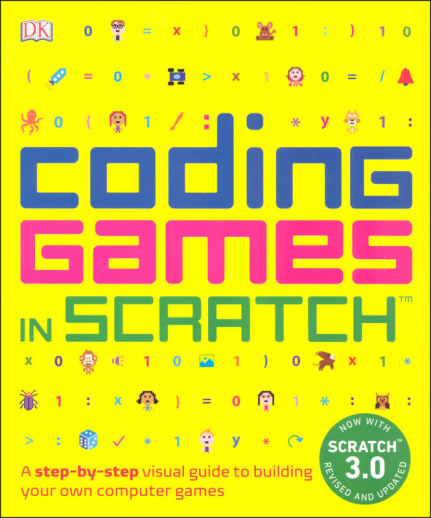In this day of technology, the skill of programming is super helpful and easier to learn thanks to programs like Scratch. This book kicks off with an introduction to the user about the basics of programming and why it's so important. Following the intro are basic commands and tools with their definitions that are used in the programming world. Using the Scratch 3.0 program, the user will be guided through a variety of simple games to create. The first projects start out with a brief and basic step-by-step process (including pictures of each step), and progress to more complex and challenging game creations by the end of the book. Included with the intro of this book are tips on finding and installing the coding app, as well as recommendations on which version to use for your computer (online vs. offline). This is a great way for creatives of any age to start programming their very own computer games! Note: this book uses the Scratch 3.0 version, and may not work with older versions. Scratch 3.0 can be used on desktop computers, laptops, or tablets, but works best when used with a mouse rather than touchpad. 224 pgs, pb. ~ Brianna
Coding Games in Scratch 3.0 (Revised and Updated)
Description
A step-by-step visual guide to building your own computer games using Scratch 3.0.
Scratch 3.0 has landed, so stay ahead of the curve with this fully updated guide for beginner coders. Kids will love the step-by-step, visual approach that makes even the most difficult coding concepts fun and easy to understand. Coding Games in Scratch, 2nd Edition, blends coding theory with the practical task of creating exciting games. Children learn the fundamentals of computer programming by seeing how to build their own games.Coding theory is taught through practical tasks, so young programmers don't just learn how computer code works; they learn why it's done that way. Jumpy Monkey shows them how to simulate gravity in their games, or they can give Dog's Dinner a try to learn about collision detection. Once they've zoomed through the book, the possibilities are endless!Labeled as Step-by-step visual guides to coding, these DK guides are certainly the friendliest introductions to programming Ive seen! Designed for younger students new to coding, these books serve as introductory-level guides for both programming in general as well as Scratch and Python. A brief introduction to the language and topic sets the stage before students embark upon projects of gradually-increasing complexity. Relevant illustrations (helpful and humorous!), line each and every page, accentuating the given topic and adding a touch of fun to keep kids engaged. Text is divided into simple bullet paragraphs which play off the provided drawings perfectly. Once actual projects come into play, these paragraphs are numbered and illustrated with screenshots to mimic what the student will be seeing on the screen. Captions, arrows, and other guides provide further aid during crucial steps.
In addition to these simple nuances, the material within each book is more than adequate for introductory coding. A rather lengthy Getting Started/First Steps chapter in each book provides basic tools and an intro to the language within the context of simple programs. Students are briefly introduced to a concept or function, and then they follow along in creating a program that uses that concept or function. Once its created, students are usually asked to modify it to add greater functionality rather than write a new program. Finally, students apply the knowledge theyve gained to create cohesive games and projects. Its a wonderfully seamless system, and certainly one I wish I had in my early coding books!
| Product Format: | Paperback |
|---|---|
| Grades: | 3-7 |
| Brand: | Dorling Kindersley |
| ISBN: | 9781465477330 |
| Length in Inches: | 9.25 |
| Width in Inches: | 7.625 |
| Height in Inches: | 0.5 |
| Weight in Pounds: | 1.5 |

